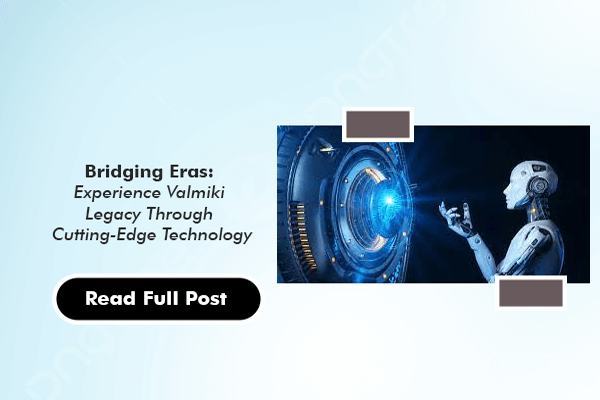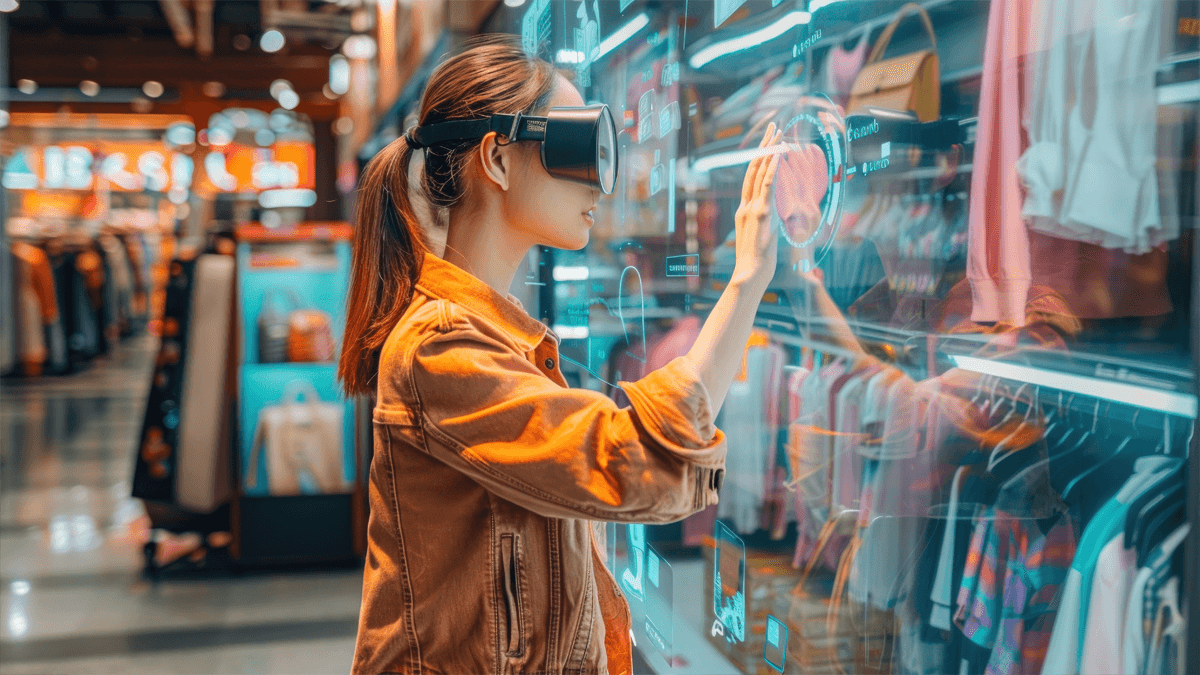Ever wondered how technology can evoke your emotions? With the advent of AI-powered digital personas, the boundaries between reality and virtuality blur, transforming human interaction into a whole new experience.
Enter the Bhagwan Valmiki Museum, dedicated to the enlightened composer of the Ramayana, the first epic poem. Conceptualized and designed by Tagbin, Digital Valmiki is a state-of-the-art masterpiece that showcases the qualities that earned Valmiki his revered title. Tagbin masterfully presents this ancient sage using cutting-edge technology, creating a seamless blend of past and present.
Technological Innovations
At the Valmiki Museum, modern technology is transforming how visitors connect with ancient heritage, making Valmiki’s timeless works accessible and engaging for all.
Large Language Models (LLMs)
Leveraging large language models (LLMs), this project digitizes Valmiki’s literature, preserving his epic narratives and enhancing their understanding. Advanced AI breathes new life into Valmiki’s works, making them more accessible to contemporary audiences
3D Model
Ultra Realistic 3D models with rigging and animation capabilities represent the pinnacle of digital artistry. These models mirror real-world objects, characters, and environments with stunning accuracy, capturing minute details like textures, lighting, and surface imperfections. Rigging provides a skeletal framework, enabling natural movement, and the models can perform a wide range of actions, from simple gestures to complex sequences. This blend of lifelike visuals and advanced mechanics offers an immersive experience, perfect for film, video games, virtual reality, and simulations.The combination of ultrarealistic visuals and advanced rigging techniques ensures that these models not only look lifelike but also behave in a convincingly natural manner, enhancing the immersive experience for users and audiences.
Computer Vision
Computer vision technology empowers digital personas to perceive and interpret visual information, enhancing interactivity in virtual and augmented reality segments. This tech enables dynamic and engaging virtual experiences. This technology also involves the digital personas to see the visitor and interact in real-time.
AI for Lip Sync and Expression Generation
AI-driven lip sync and expression generation technologies have significantly advanced the fields of animation and virtual communication. Using sophisticated machine learning algorithms, these technologies synchronize animated characters’ lip movements and facial expressions with spoken audio, ensuring realistic interactions. Deep learning models and extensive video-audio datasets enable characters to convey emotional nuances, making virtual engagements feel more natural and lifelike.
Speech-to-Text and Text-to-Speech Technology
Advanced Speech-to-Text (STT) technology converts spoken language into written text in real-time, using deep neural networks to analyze audio signals and transcribe words. Text-to-Speech (TTS) technology, on the other hand, transforms written text into spoken language with synthetic voices, enabling seamless audio interactions.
Natural language processing (NLP)
NLP is a subfield of AI focused on the interaction between computers and humans through natural language. By leveraging computational linguistics and machine learning algorithms, NLP allows machines to understand, interpret, generate, and respond to human language effectively, enhancing user interaction.
Voice Cloning
Technology that involves the use of artificial intelligence (AI) to create a digital replica of the human voices. By analyzing vocal characteristics such as pitch, tone, and speaking style, these systems generate synthetic speech that closely mimics the original speaker, adding a new dimension to virtual communication.
All These Innovations Unite in the Digital Valmiki Project
Together, these cutting-edge technologies make the Digital Valmiki Project a beacon of cultural preservation and modern engagement. Now, let’s dive into the workings of these fascinating technologies and discover how they bring Valmiki’s legacy to life in the digital age.
To provide a highly realistic interactive experience for visitors, the system employs several advanced technologies. A microphone is set-up to capture the visitor’s speech, enabling them to ask questions or engage in conversation. The captured audio is processed using state-of-the-art Speech-to-Text models, such as the Speech-to-Text Model. Then the converted text is then passed to a Large Language Model (LLM) which generates appropriate responses.
The generated text response is then input into a voice cloning system, which synthesizes the text into speech that mimics a predefined voice. To enhance realism, the synthesized speech is coupled with AI-driven facial expression and lip synchronization technologies. These technologies ensure that the digital Valmiki model exhibits natural facial expressions and accurate lip movements, making it appear as if Valmiki is realistically speaking in real time.
Captivating the Essence of India’s Rich History
The primary goal of the Bhagwan Valmiki Museum is to captivate audiences with the rich history of India and its monumental epic, the Ramayana. To achieve this, we ventured into the realm of emerging technologies, creating an innovative foundation that seamlessly blends tradition with modernity.
Each technology is carefully tailored to showcase the various aspects of Valmiki’s life in an immersive and interactive manner, making it easier for visitors to absorb and take home valuable insights and teachings. Our conversational technology enables visitors to dive deeper into the wisdom of the sage, fostering a meaningful connection with his teachings.
Creating Impact
Beyond its captivating exhibits, the Valmiki Museum serves as a vibrant hub for educational activities. Regular workshops, lectures, and seminars delve deeper into Valmiki’s teachings and the cultural context of his works. Scholars, students, and enthusiasts from around the world gather to participate in these programs, fostering a global community dedicated to learning ancient literature.
This initiative promises to have a profound socio-religious impact on visitors. By showcasing the timeless relevance of Valmiki’s contributions to literature and spirituality, the museum fosters a deeper understanding of India’s rich cultural heritage. It offers youth and students, who might otherwise overlook India’s historical significance, an opportunity to connect with it in a contemporary manner. This innovative approach not only preserves the historic past but also ensures its relevance for future generations.
Conclusion
The Bhagwan Valmiki Museum is more than just a repository of historical artifacts; it is a dynamic cultural institution that preserves the legacy of one of India’s greatest literary figures, educates future generations, and promotes cultural engagement. Through its innovative use of technology, comprehensive educational programs, and vibrant cultural events, the museum ensures that the teachings and stories of Valmiki continue to inspire and resonate with people around the world. As it bridges the past and the present, the Bhagwan Valmiki Museum stands as a beacon of cultural preservation and a catalyst for future learning and inspiration.




